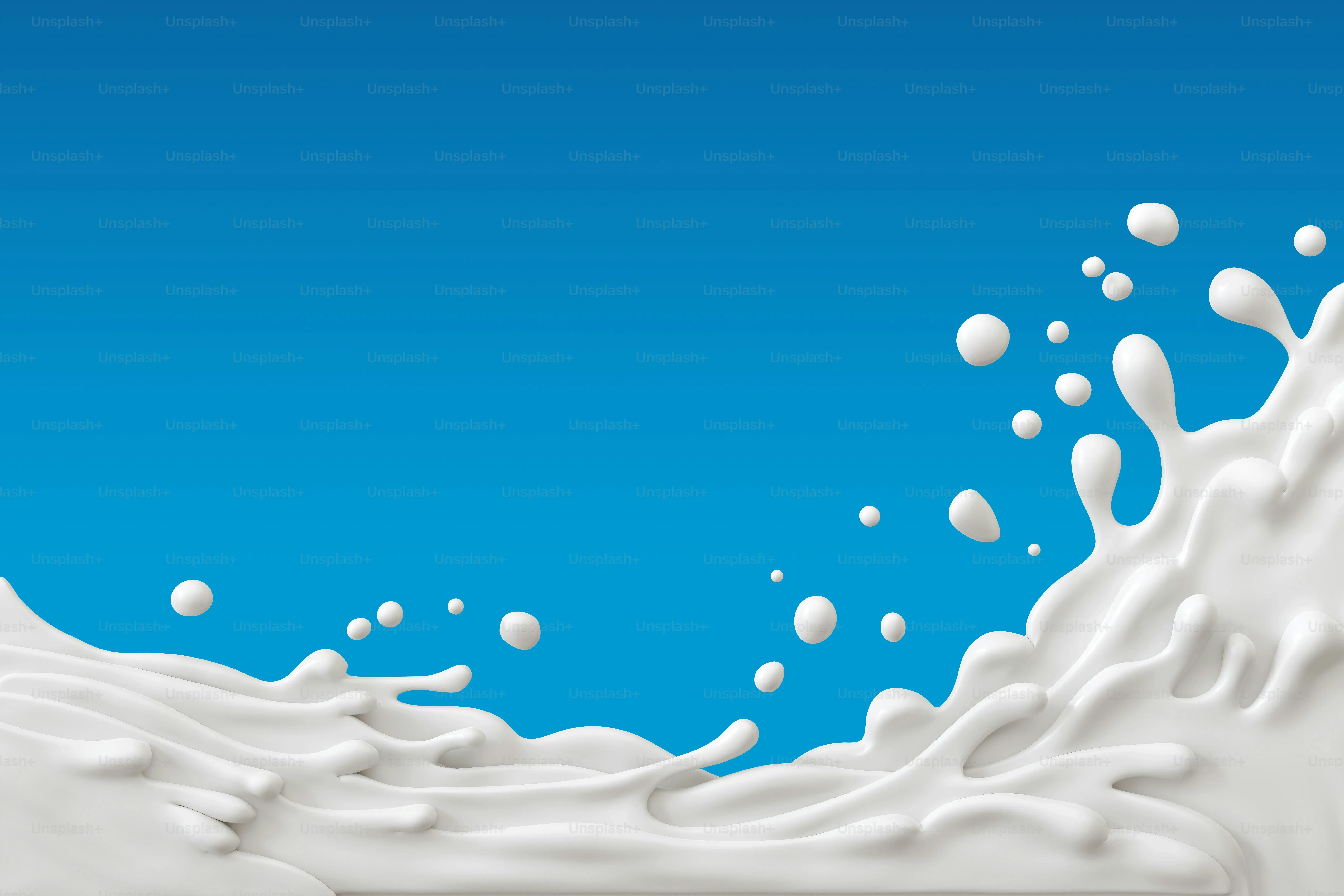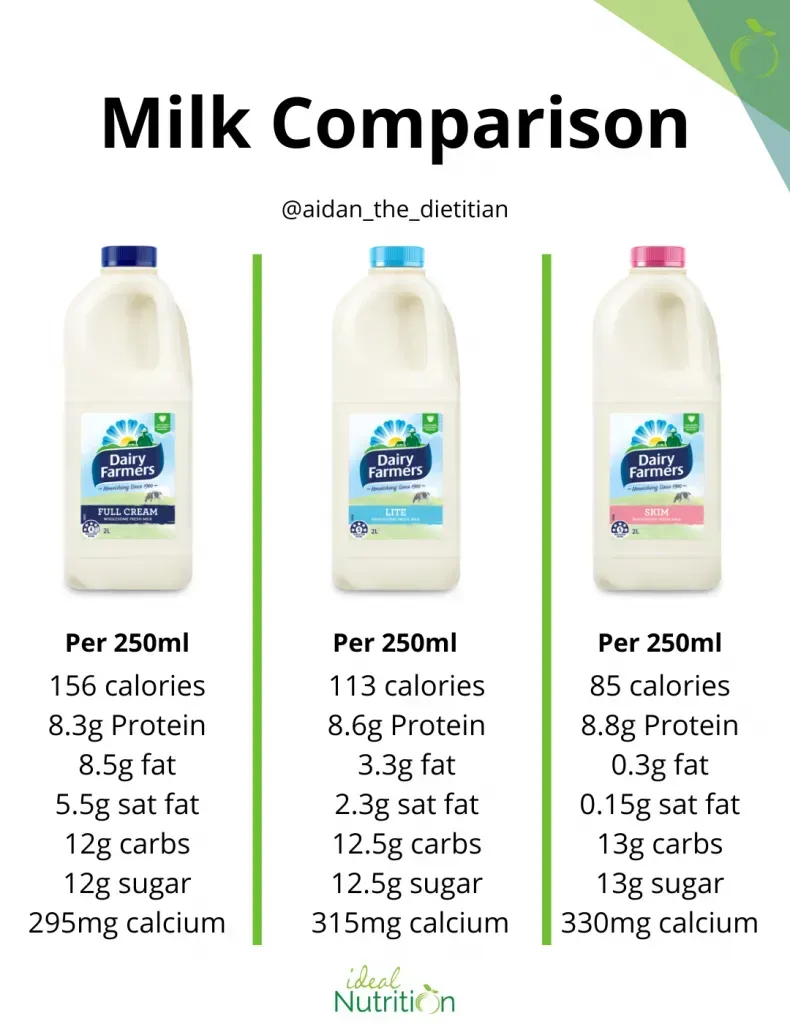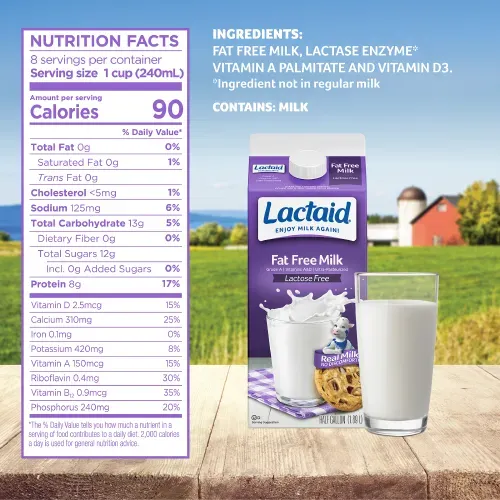Table of Contents
You reach for the carton of low-fat milk, maybe hoping it's easier on your stomach than the full-fat stuff. It seems logical, right? Less fat, maybe less of that tricky sugar called lactose? Well, hold on a second before you pour that cereal. The truth about low fat milk lactose content isn't quite as simple as a calorie count. Lactose is a carbohydrate, a sugar naturally present in milk, and its presence doesn't really care how much fat is hanging around. For millions dealing with lactose intolerance, understanding exactly how much lactose is in their preferred milk matters a great deal. Does skimming off the cream actually remove the discomfort? We're diving deep into the dairy case to settle the score. We'll break down what lactose is, compare low-fat milk to other dairy products, explore truly low-lactose options, and look at the science behind why fat content doesn't magically erase intolerance symptoms. Stick around if you want to know what's really happening inside that carton and your gut.
Does Low Fat Milk Have Less Lactose Than Whole Milk?

Does Low Fat Milk Have Less Lactose Than Whole Milk?
let's cut straight to it because this is a common point of confusion. When you're wondering, Does Low Fat Milk Have Less Lactose Than Whole Milk?, the short answer is generally no. Think about what lactose is: it's a sugar, a carbohydrate, that's dissolved in the watery part of the milk. Fat, on the other hand, is, well, fat – it's the creamy stuff that separates out. When milk producers make low-fat or skim milk, they're removing the fat globules, not the liquid that contains the dissolved lactose sugar. So, whether you're drinking whole milk with its roughly 3.25% fat or skim milk with less than 0.5% fat, the amount of lactose per cup remains remarkably consistent. The fat content might change the texture and calorie count, but it doesn't perform some magical disappearing act on the lactose.
Understanding Lactose and Why it Matters
So, what exactly is this lactose stuff and why does it cause such a fuss for some people? Lactose is a disaccharide, a type of sugar made up of two smaller sugars: glucose and galactose. Your body needs an enzyme called lactase to break down lactose into those smaller, digestible parts. Think of lactase as the key that unlocks the lactose molecule so your gut can absorb the good stuff. The issue for folks with lactose intolerance is that their bodies don't produce enough lactase, or sometimes none at all. When that undigested lactose travels through the digestive system, it starts fermenting in the large intestine, and that's when the party starts – a gas-producing, bloating, cramping, and generally unpleasant party. Understanding this basic mechanism is key because it highlights why simply removing fat from milk doesn't solve the underlying problem of insufficient lactase to handle the sugar that's still very much present in that low fat milk lactose content.
Comparing Low Fat Milk Lactose Content to Other Dairy

Comparing Low Fat Milk Lactose Content to Other Dairy
so we know the fat content doesn't change the lactose in regular milk, but how does low fat milk lactose content stack up against the rest of the dairy aisle? It turns out, not all dairy is created equal when it comes to lactose. While a cup of low-fat milk has roughly the same amount of lactose as a cup of whole milk (around 12 grams), things change when you look at products like yogurt or cheese. Yogurt, especially Greek yogurt, often has less lactose because the live and active cultures used in fermentation actually consume some of the lactose. Hard cheeses, like cheddar or Swiss, are even lower. Why? Because during the cheese-making process, most of the lactose is removed with the whey, leaving very little behind in the solid curd. Butter? It's mostly fat, with hardly any lactose since the watery, lactose-rich part is separated out.
Dairy Product (Approximate 1 cup serving) | Approximate Lactose Content (grams) |
|---|---|
Whole Milk | 12 |
Low-Fat Milk (1% or 2%) | 12 |
Skim Milk | 12 |
Yogurt (Regular, plain) | 8-10 |
Greek Yogurt (Plain) | 4-8 |
Cheddar Cheese (1.5 oz) | Less than 1 |
Butter (1 tbsp) | Trace amounts (less than 0.1) |
Finding Low Lactose Options If Regular Low Fat Milk Causes Issues

Finding Low Lactose Options If Regular Low Fat Milk Causes Issues
Go Straight for Lactose-Free Milk
Alright, so if your gut is staging a protest every time you sip regular low fat milk lactose content, the most obvious pivot is to grab a carton labeled "lactose-free." These aren't some weird milk imposters; they're typically real cow's milk that's been treated with the lactase enzyme. Remember that enzyme we talked about that breaks down lactose? Producers just add it in during processing. This pre-digests the lactose for you, so when it hits your system, the sugar is already broken down into glucose and galactose, ready for absorption without causing fermentation chaos. It tastes pretty similar, maybe slightly sweeter because glucose and galactose are perceived as sweeter than lactose, but it functions just like regular milk for cooking or pouring over your cereal. It's a straightforward switch that keeps you in the dairy game without the discomfort.
Explore Naturally Lower Lactose Dairy
But maybe you're not ready to commit solely to lactose-free milk, or you enjoy other dairy forms. The good news is that some dairy products are naturally lower in lactose than milk itself. We touched on this briefly, but it's worth revisiting. Hard cheeses, like aged cheddar, Parmesan, and Swiss, contain minimal lactose because most of it is drained off with the whey during production and further broken down during the aging process. Butter is another winner; it's primarily fat, with only trace amounts of lactose left. Yogurt, particularly Greek yogurt with its strained texture and active cultures, can also be easier on the stomach than a glass of milk, though the lactose content can still vary.
Why are these different? It comes down to processing. Think about it: milk is essentially unprocessed liquid dairy. Cheese involves separating solids from liquids and aging. Yogurt involves fermentation by bacteria that eat lactose. These steps inherently reduce the lactose load compared to just pasteurizing milk.
- Hard cheeses (cheddar, swiss, parmesan): Very low lactose.
- Butter: Trace lactose.
- Greek yogurt: Lower lactose than regular yogurt due to straining.
- Kefir: Fermented drink, can be lower in lactose for some.
- Lactose-free milk: Regular milk with added lactase enzyme.
Consider Enzyme Supplements or Non-Dairy Alternatives
For those times you might consume regular dairy (like that slice of pizza or a creamy soup) and know your system won't be happy, lactase enzyme supplements are an option. You take a pill or chewable tablet right before eating or drinking something with lactose. These supplements provide the enzyme your body lacks, helping to break down the lactose in your stomach. They're not foolproof for everyone, but they can make occasional dairy consumption possible without severe symptoms. It's like bringing your own key to unlock the lactose.
Of course, the other path is bypassing dairy altogether. The market is flooded with non-dairy milks made from almonds, soy, oats, cashews, and more. These are naturally lactose-free because they don't come from cows. While they differ in taste, texture, and nutritional profile from cow's milk, they serve perfectly well in many applications, from coffee to baking. Choosing a non-dairy option completely sidesteps the issue of low fat milk lactose content and any potential digestive woes associated with it.
The Science Behind Low Fat Milk and Lactose Intolerance Symptoms

The Science Behind Low Fat Milk and Lactose Intolerance Symptoms
Why Fat Content Doesn't Impact Lactose Digestion
Let's get down to brass tacks on The Science Behind Low Fat Milk and Lactose Intolerance Symptoms. The core issue isn't how much fat is in your milk; it's how your body handles the sugar, lactose. Lactose is a water-soluble molecule. It dissolves in the liquid part of milk, the part that remains whether you skim the fat off or leave it all in. Your small intestine needs the enzyme lactase to break this lactose into two simpler sugars, glucose and galactose, which can then be absorbed into your bloodstream. Fat, on the other hand, is digested by different enzymes entirely, mainly lipases. Removing fat doesn't remove the lactose, and it doesn't magically introduce the lactase enzyme your body might be missing. It's like trying to fix a leaky faucet by changing the lightbulb – they're just different systems.
The Lactase Deficiency and Fermentation Process
So, what happens when that lactose hits your gut without enough lactase to greet it? It travels undigested to your large intestine. Here, billions of bacteria are having a field day, and lactose is their favorite snack. These bacteria ferment the lactose, producing gases like hydrogen, methane, and carbon dioxide. This gas production is what causes the bloating, cramping, and flatulence. The undigested lactose also draws water into the intestine, leading to diarrhea. The speed at which food moves through your gut can influence symptoms, and theoretically, fat can slow down gastric emptying, meaning the lactose might hang around longer in the small intestine before hitting the large intestine. However, studies, like one notable paper from 1997, have shown this theoretical effect of fat doesn't significantly alter the *total* amount of fermentation or the resulting symptoms compared to low-fat milk. The lactose load is the same, and the bacterial party in the large intestine proceeds regardless of the milk's fat percentage.
Component | Location in Milk | Digested by | Impact on Lactose Intolerance? |
|---|---|---|---|
Lactose (Sugar) | Watery portion | Lactase enzyme (in small intestine) | Primary cause of symptoms if not broken down |
Fat (Lipids) | Globules suspended in liquid | Lipase enzymes (mainly in small intestine) | Minor impact on gastric emptying, but doesn't change lactose amount or primary digestion issue |
Protein | Dissolved and suspended | Protease enzymes (stomach and small intestine) | Not directly related to lactose intolerance symptoms |
Individual Variability and Symptom Thresholds
It's also worth noting that lactose intolerance isn't an all-or-nothing condition for everyone. Many people with reduced lactase activity can handle a certain amount of lactose without significant issues. This is often referred to as a symptom threshold. Some might tolerate the small amount in a hard cheese, while a full glass of milk, regardless of fat content, sends them running for cover. This threshold varies widely from person to person. Factors like the overall meal composition (eating dairy with other foods can slow digestion), the health of your gut bacteria, and even psychological factors can play a role in how symptoms manifest. While the science confirms that low fat milk lactose content is essentially the same as whole milk, an individual's experience might feel different due to these other variables or simply perception. But from a physiological standpoint, removing fat doesn't fix the underlying inability to break down lactose.
Wrapping Up: Low Fat, Same Lactose Story
So, the short answer to your burning question is this: swapping whole milk for low-fat isn't going to make a difference if lactose is your problem. The low fat milk lactose content remains virtually the same as its full-fat cousin because lactose lives in the watery part of the milk, not the fat globules. Trying to ease digestive woes by picking the blue cap instead of the red? It's a noble thought, but scientifically, it's a swing and a miss. Managing lactose intolerance means looking at the actual lactose quantity in dairy products or opting for truly lactose-free alternatives. Don't get sidetracked by the fat percentage; focus on the sugar your gut can or can't handle.
